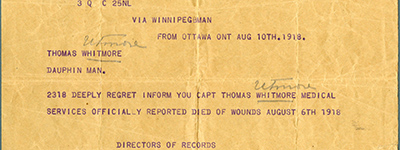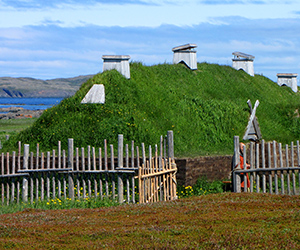CANADA HISTORY - Govenors General
Mary Simon

Mary Simon: Canada's First Indigenous Governor General
On July 26, 2021, Mary Simon made history when she was sworn in as the 30th Governor General of Canada, becoming the first Indigenous person to hold this prestigious role. Simon, a distinguished Inuit leader, diplomat, and advocate for Indigenous rights, brought a wealth of experience to the position. Her appointment marked a significant moment in Canada’s journey toward reconciliation with Indigenous peoples, and her tenure has focused on fostering unity, promoting Indigenous culture, and addressing key social and political challenges.
This article explores Mary Simon’s remarkable life, her accomplishments, and the challenges she has faced as Governor General.
Early Life and Education
Mary Jeannie May Simon was born on August 21, 1947, in Kangirsualujjuaq, a small Inuit village in northern Quebec, then known as Fort Chimo. Her mother, Nancy May Angnatuk, was Inuk, and her father, Bob Mardon May, was a fur trader from Manitoba who worked for the Hudson’s Bay Company. Growing up in the remote region of Nunavik, Simon was immersed in Inuit culture and language from a young age. She spoke Inuktitut at home and learned English at a federal day school. Her early experiences living in a traditional Inuit community, combined with the challenges of navigating two cultural worlds, would shape her future work as a bridge-builder between Indigenous and non-Indigenous Canadians.
Simon attended Kuujjuaq Federal Day School in Quebec before moving to southern Canada to complete her education. While her formal education took place outside of her home region, Simon maintained strong ties to her Inuit heritage, participating in community activities and advocating for Indigenous rights even from a young age. Her bilingual and bicultural background made her a natural leader in Inuit communities, and she began her career working with organizations that represented the interests of the Inuit in Canada.
Advocacy and Leadership in Indigenous Rights
In the 1970s, Simon became a prominent figure in the movement for Inuit rights and self-determination. She served as a producer and announcer for the CBC Northern Service, giving her an important platform to communicate with Inuit communities across the Arctic. However, it was her leadership in land claim negotiations that truly propelled her to national prominence.
Simon played a crucial role in negotiating the James Bay and Northern Quebec Agreement in 1975, which was Canada’s first modern Indigenous land claim agreement. This landmark agreement, signed between the Quebec government, the Inuit, and the Cree, provided compensation, land rights, and greater self-governance to the Indigenous peoples of northern Quebec. Simon’s involvement in these negotiations demonstrated her skill as a negotiator and advocate for Inuit rights.
In 1980, Simon became the President of the Inuit Tapiriit Kanatami (ITK), the national organization representing Inuit in Canada. As president, she worked to address critical issues facing Inuit communities, including housing, education, and health care. Simon was also instrumental in bringing attention to the harmful effects of climate change on the Arctic, advocating for environmental protections that would preserve the traditional Inuit way of life.
Simon's leadership extended beyond Canada. In the 1980s and 1990s, she represented the Inuit at the United Nations and other international forums, including the Arctic Council, where she advocated for the recognition of Indigenous rights on a global stage. Her efforts contributed to the growing awareness of the unique challenges faced by Indigenous peoples in the Arctic and the importance of protecting their cultural and environmental heritage.
Diplomatic Career
In addition to her work in Indigenous advocacy, Simon has had a distinguished diplomatic career. From 1994 to 2003, she served as Canada’s first Ambassador for Circumpolar Affairs, a position that involved representing Canadian interests in the Arctic and fostering cooperation among Arctic nations. Simon’s tenure as Ambassador coincided with the establishment of the Arctic Council in 1996, and she played a key role in its formation. The council brought together Arctic nations and Indigenous peoples to address issues such as climate change, sustainable development, and Indigenous rights.
During her time as Ambassador for Circumpolar Affairs, Simon also served as Canada’s Ambassador to Denmark from 1999 to 2001. This diplomatic role allowed her to strengthen Canada’s relationship with Denmark, particularly in matters related to the Arctic. Simon’s expertise in circumpolar affairs and her ability to build bridges between diverse stakeholders made her an influential figure in international diplomacy.
Simon's contributions to diplomacy and Indigenous rights were recognized with numerous awards and honors, including the Order of Canada in 2005 and the National Aboriginal Achievement Award.
Appointment as Governor General
In July 2021, Prime Minister Justin Trudeau announced Mary Simon’s appointment as Governor General, succeeding Julie Payette. Simon’s nomination was seen as a historic and symbolic step toward reconciliation with Indigenous peoples, particularly in light of Canada’s ongoing reckoning with its colonial past and the legacy of residential schools. Her appointment came at a time when the country was grappling with the discovery of unmarked graves at former residential school sites, which had brought renewed attention to the trauma experienced by Indigenous communities.
Simon’s appointment was widely celebrated, especially by Indigenous leaders and organizations. As the first Indigenous Governor General, Simon’s role was seen as a significant step toward healing the relationship between Indigenous and non-Indigenous Canadians. However, her appointment also highlighted the complexities of Canada’s colonial legacy. Simon, who is fluently bilingual in Inuktitut and English, faced criticism from some quarters for not being fluent in French, one of Canada’s two official languages. Simon addressed this criticism by acknowledging her personal history—she had been educated in federal day schools that did not offer French instruction—and committed to learning French during her tenure.
Promoting Reconciliation and Unity
Since assuming office, Mary Simon has made reconciliation a central theme of her governorship. In her inaugural address, she spoke about the importance of building bridges between Indigenous and non-Indigenous Canadians and fostering greater understanding of Indigenous cultures and histories. She emphasized that her appointment was a “historic and inspirational moment for Canada” and that her role would be to “support Canadians as we confront the hard truths of our history.”
One of Simon’s first major acts as Governor General was to participate in National Day for Truth and Reconciliation on September 30, 2021. The day, which was established by the federal government to honor the survivors of residential schools and the children who never returned home, marked an important moment in Canada’s collective journey toward reconciliation. Simon’s participation underscored the significance of her appointment and her commitment to addressing the injustices of the past.
Simon’s governorship has also been marked by her efforts to promote Indigenous culture and language. She has used her platform to highlight the contributions of Indigenous peoples to Canadian society and to advocate for the revitalization of Indigenous languages. In addition, Simon has continued to champion environmental issues, particularly those affecting the Arctic. As a lifelong advocate for environmental protection, she has raised awareness about the impact of climate change on Inuit communities and the need for sustainable development in the North.
Challenges and Leadership During Difficult Times
Simon’s tenure as Governor General has not been without challenges. Canada continues to face significant social and political divisions, including debates over Indigenous land rights, environmental policy, and the future of the monarchy. As Governor General, Simon’s role is largely ceremonial, but she has used her position to promote dialogue and understanding on these issues.
One of the key challenges Simon has faced is navigating Canada’s evolving relationship with the British monarchy. As a representative of the Crown, Simon occupies a unique position in a country where discussions about the future of the monarchy are becoming more frequent. While many Canadians support the monarchy, others, particularly within Indigenous communities, view it as a symbol of colonialism. Simon’s ability to navigate these complex dynamics has been a testament to her diplomatic skills and her commitment to representing all Canadians.
In addition to these challenges, Simon has been a visible leader during times of national crisis. During the COVID-19 pandemic, she has provided a steady voice of reassurance and encouragement, emphasizing the importance of unity and collective action in overcoming the challenges posed by the virus.
Legacy and Continuing Impact
Mary Simon’s appointment as Governor General of Canada is a milestone in the country’s history, not only because she is the first Indigenous person to hold the office, but also because of the lasting impact she is having on the conversation about reconciliation, Indigenous rights, and Canada’s national identity. Her leadership has inspired hope for a future where Indigenous and non-Indigenous peoples can coexist in a spirit of mutual respect and understanding.
Simon’s legacy will likely be defined by her efforts to promote reconciliation, environmental stewardship, and national unity. Her background as an advocate for Inuit rights, her experience in diplomacy, and her commitment to fostering dialogue have made her a powerful symbol of progress and change in Canada. As she continues her tenure as Governor General, Simon’s leadership will be critical in shaping the country’s future and guiding it through the ongoing challenges of reconciliation and nation-building.
Mary Simon’s historic appointment as Canada’s first Indigenous Governor General represents a turning point in the country’s efforts toward reconciliation and the recognition of Indigenous peoples. Her career as a diplomat, advocate, and leader has prepared her well for the challenges and responsibilities of the vice-regal office. Throughout her tenure, Simon has focused on promoting national unity, fostering reconciliation, and addressing the environmental and social challenges facing Canada.
Simon’s governorship serves as a reminder of the power of representation and the importance of diverse voices in leadership. Her story is one of resilience, dedication, and hope, and her impact on Canada’s journey toward reconciliation will be felt for generations to come.
Cite Article : Reference: www.canadahistory.com/sections/documents/documents.html
Source: NA



